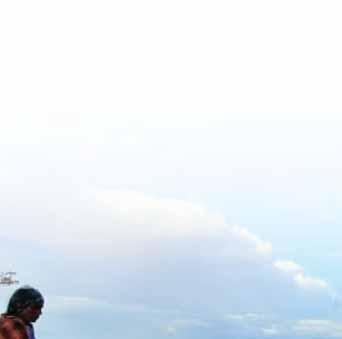
14 minute read
A photo contest helps fund mega projects
A photo contest helps fund mega projects in RID 3190
Kiran Zehra
Advertisement
The Environment Sustainability Rotarians Action Group (ESRAG) of RID 3190 and the International Fellowship of Rotarian Photographers (IFRP) organised a photo contest to create awareness on conservation of biodiversity and diverse culture, and also raise funds for three major district projects. The contest brought together various Rotary action groups, Rotarians and Rotaractors in the district through an online platform. “The strategic partnership between RAGs, International Fellowships and local clubs will breathe new life into Rotary as it allows members across the world to raise funds, grow membership and exchange project ideas virtually. All the initiatives were carried out locally,” says Latha Krishnan, coordinator of the photo contest.
Three projects — Rupantara, a menstrual health programme at Rajakunte village, Koira Lake rejuvenation and rain water harvesting (RWH) at government schools — were chosen for funding keeping in mind the scale of impact they will have on people and the environment. After the District RAGs chair Raghu Allam gave the green signal, a virtual The Rotary En-vision Photography Contest was announced. “It showcased environment-related projects carried out by our district. We encouraged amateur and professional photographers to capture the rich biodiversity and share it with the world,” she said. The IFRP experts judged 500 entries from across the country. DG B L Nagendra Prasad was the chief guest; 28 Rotary clubs and four Rotaract clubs participated. The event helped raise `5.27 lakh, which was allocated for the three projects. The photo contest was supported by the Rotary Fellowship of Wildlifers for Conservation.
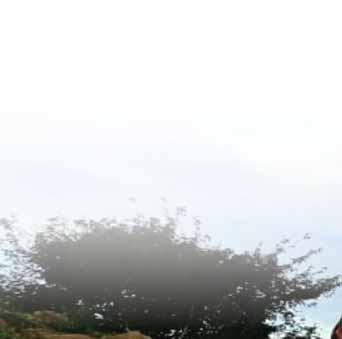
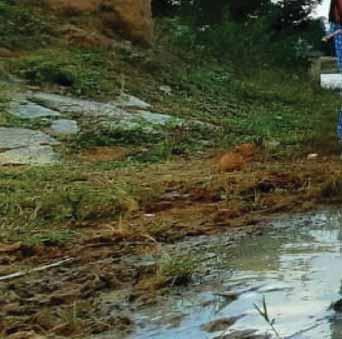
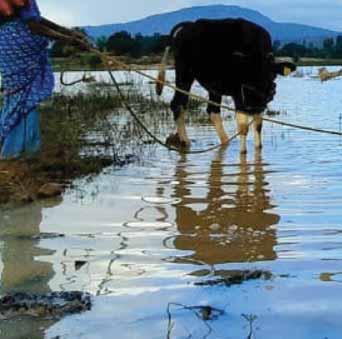
Project Rupantra
District MHM chair Nisha Ballerie says that the MHM initiative began three years ago with the mapping of existing knowledge, attitude and practices in Rajakunte, a semi-urban locality near Bengaluru. “With the help of self-help groups, Asha workers and anganwadi staff we engaged the girl students for behaviour change at the school and community level.” As part of the training, 12 implementation partners, Rupantara Sakhis as they are called, were given free kits consisting of cloth pads and menstrual cups and were told to first try them out before advocating them to the village women. The MHM kits were sponsored by NariYari, a social enterprise in Bengaluru.
At the ground-level, the sakhis went from door-to-door urging women to switch to reusable menstrual products to reduce the toxic waste generated by single-use sanitary napkins. “Since the volunteers are known faces and have built trust over the years, the message was readily accepted,” says Nisha.
Shylaja, an Asha worker and a Rupantara sakhi, who promotes menstrual cups in the village says, “I have tried it myself and now have rashfree periods. It also saves me a huge amount of money that I used to buy sanitary napkins every month. I am contributing in a small way to keep Rajakunte green and bring transformation.” A recent survey conducted by the sakhis shows that 75 per cent of the women are willing to buy cloth pads and 30 per cent of them are willing to switch to menstrual cups when available at reasonable rates “if it ensures chemical-free periods and doesn’t pollute their surroundings,” says Shylaja.
Before she came up with Rupantra with the help of her club, RC Bengaluru Platinum City, Nisha had conducted MHM awareness programmes for over 10,000 girls and women in and around the city.
Five clubs came together to form Gramalakshmi, a self-help group, with seed funding in 2019. This SHG is now producing and supplying Aaram cloth pads to the government schools, colleges and for the Rupantra Project. “Four women from Sriramanhalli near Bengaluru are successfully running the SHG. Around 350 women were trained across seven villages to carry forward our mission. Along with a couple of NGOs, we are working to stop around 200,000 single-use napkins from being dumped into landfill sites each year. ”
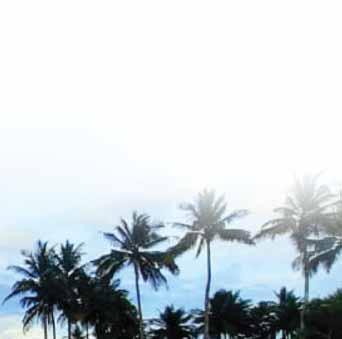
Lake restoration
Rampant quarrying of granite boulders over decades had left the residents of Koira village in Devanahalli taluk in rural Bengaluru jobless as agriculture was destroyed due to drying up of lakes and other water bodies. “We had no choice but to move out of the village or join the quarrying business,” said Chikkegowda (54), a local resident.

The Koira Lake rejuvenated by RC Bangalore Raj Mahal Vilas.

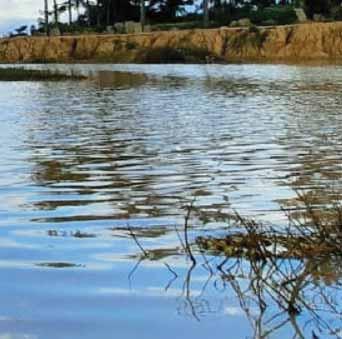

Paddy being cultivated at Koira village.
He sought the help of RC Bangalore Raj Mahal Vilas and its president Sanjay Krishna decided to take up lake restoration in Koira. A study report was submitted to the project committee and it was first decided to clear around 57,000 cubic metres of silt while cleaning the feeder canal. “The villagers had already desilted 15,000 cubic metres of muck on their own. We completed the project in two years,” says Krishna.
The project cost was pegged at `80 lakh and through the photo contest, they had received `1.8 lakh. The additional funds were contributed by villagers who also joined the manpower and pooled in other resources for the lake restoration work. “Eight families gave up their 10-acre land, which was an encroachment, near the lake as they wanted to restore the lake and help regain lost livelihoods,” he says. Today, the Koira Lake is brimming with water, along with the wells in all the four villages, and farmers have begun work on their land. “We want those who left the village to return,” smiles Chikkegowda.
The RWH project, which aims at setting up rainwater percolation units at 100 government schools in Karnataka, has recently inaugurated two units at Hoodi Government Schools near Bengaluru. The project cost of `1.25 lakh was contributed by the employees of Caterpillar, a construction and mining equipment manufacturer. The units will be maintained by a student committee and monitored by RC Bengaluru Lake World. Project in-charge John Daniel says there are plans to convert the student committee into a Rotaract club. The funds received from the photo contest will be used in the setting up of RWH units in other schools.
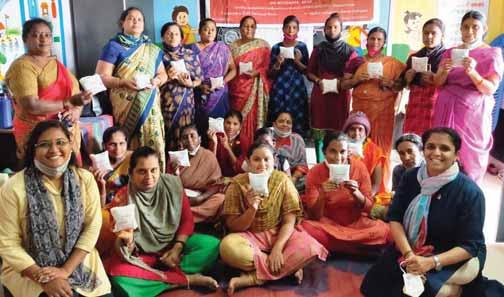
Rupantara Sakhis promoting cloth sanitary napkins.
Rotary constructs check dam at Bandipur
Jaishree
Rotary Club of Mysore South East, RID 3181, has constructed a 48-feet-long check dam in the middle of a dense forest, 10km from the Bandipur Tiger Reserve near Mysuru. “The region, spread over 800 sq km. has a thick wildlife population. After the monsoon, when the dam fills up it will help animals and birds get enough water,” said assistant governor Harish H M. Every February and March, a majority of waterholes dry up, resulting in severe hardship for animals.
The district has undertaken watershed development as one of its focus
The region, spread over
800sqkm, has a thick
wildlife population. After the
up it will help animals and
birds get enough water, DG Ranganath Bhat inaugurates the check dam in the presence of Kannada actor Darshan Thoogudeepa, assistant governor Harish H M, club president M Rajeev and secretary M Mohan.
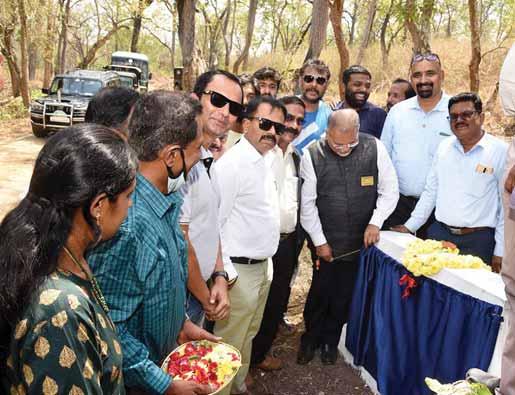
areas this year and Rotary clubs have been urged to construct check dams wherever possible. The club, led by M Rajeev and secretary M Mohan, agreed to implement the project which cost `6.5 lakh after taking due permission from the forest department. “As the region is located deep into the forest we had to spend double the money for transport of material. We were happy to engage local labour,” said Rajeev.
DG Ranganath Bhat inaugurated the check dam in the presence of district secretary Vikramdatta, conservator of forests S R Natesha and Kannada film actor Darshan Thoogudeepa. Bhat congratulated the club members for “implementing one of the best projects of the district”.
Generally monsoon sets in Bandipur in July and the area sees good rain until December. The six-feet deep check dam can collect enough water to last through the summer months, said Harish. The facility will benefit a local tribal community in the vicinity too, and the dam will be maintained by the forest department.
Earlier this year this club, along with its Inner Wheel club, rejuvenated a pond at Hadinaru, a village 18km from Mysuru. “The place used to attract several migratory birds but over the years the numbers dwindled due to poor maintenance of the water body. We spent `4 lakh and removed around six tonnes of waste from it., said Rajeev. An RCC was formed in the village to take care of its sanitation, hygiene and other needs.
In addition, a hearing aid distribution camp was conducted in association with the All India Institute of Speech and Hearing, and hearing aids were given to 100 villagers.
Homage to Rotary leaders who we lost recently
M V Ravikumar
In less than a month, RID 3190 lost three extraordinary Rotarians — past district governors S Uday Kumar (1989–90), Dr Prithvi Raval (2000–01) and U B Bhat (2008–09) creating a huge void. I was privileged to have been associated with these leaders who shaped my Rotary journey.
My first meeting with Bhat (U B) was when our club chartered his home club with him as charter president — Rotary Bangalore South Parade — in June 1996. In spite of his academic and professional achievements — an engineering graduate from REC Surathkal and post-graduate from IIM-Ahmedabad, brilliant marketing career in United Breweries — U B was a simple and down-to-earth friend to everyone. He was one of the passengers on board Flight IC 814 from Kathmandu to New Delhi on Dec 24, 1999, which was hijacked to Khandahar. UB captured those excruciating, restive hours in his book Terror on Board. I closely worked with him during 2002–03 when he was conference chairman and during the centennial Rotary year, when I was the district membership chairman and his home club hosted ICGF (Inter City General Forum) on club service. He was the chairman. To increase participation in ICGF he designed a special lapel pin and honoured all Rotarians who had completed 25 years in Rotary. When he was elected DG for 2008–09, he called me and said, “I know your passion in Avoidable Blindness (AB) but I also want you to be deputy district trainer.” He entrusted me the responsibility of developing training programmes for AGs training, PETS and SETS. That year, our district launched Cataract (backlog free) RI District 3190 project and we have come a long way in reducing blindness due to cataract.
I recall my first meeting with Dr Raval in July 1999, to finalise dates for my installation as president and the Governor’s Official Visits as he was taking over as DG during 2000–01. This initial meeting immediately struck a chord between us, for he and I were both very strict about punctuality. During 2002–03, when he was appointed the regional AB coordinator for South Asia, he requested the incoming DG Bhansali to appoint me as the district AB committee chairman. Thus began my long journey with AB which got me the Service Above Self Award. Raval initiated the International Fellowship of Motorcycling Rotarians — India Chapter in 2003 making it a second-level Major Donor to TRF.
When I joined Rotary in 1988, Uday was the DGE. He developed several MG projects to ensure water availability in 40 villages by restoring wells and building storage tanks. He was particular that once a person was invited to join Rotary, he should become a lifetime Rotarian and would
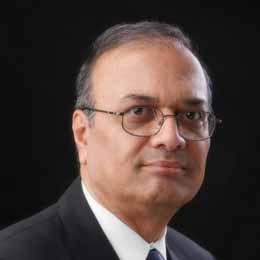
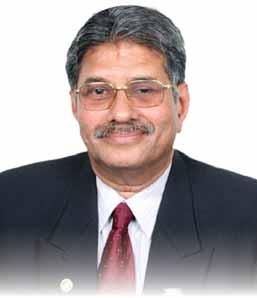
PDG U B Bhat
Vinod Bansal: a devoted Rotarian
Aishani Bansal
Vinod Bansal was a dedicated and highly qualified professional in field of finance, local and international, and a renowned corporate consultant. As a devoted Rotarian, he has worked in every area of focus with distinction. He became district governor for RID 3010 in 2013–14 after a trailblazing start in Rotary in 2001. His term was marked with consistent successes and new milestones for Rotary at the district, national and international level.
Bansal was a member of the prestigious Investment Committee of The Rotary Foundation for 2019–22. He raised the maximum funds for TRF as DG, as ARRFC for two years and now as EMGA. He raised a record $1.7 million 2013–14, which was the highest contribution to the Annual Fund in the world.
Taking charge as president of the Rotary Blood Bank in 2016–2020, Bansal transformed the institution with his clear understanding of its potential to fulfil the current needs of society by making bold choices and futuristic investments in upgrading infrastructure and expanding activities. His commitment to the future of Rotary was inspirational. His compassion, excellence and focus drove him to lay the foundation of a long-lasting vision for Rotary, with a clear focus on the role India played in this story. No wonder he was invited to serve as member of Shaping Rotary’s Future Committee for 2021–22. First among equals, he always led from the front. Every single colleague remembers him as a humanitarian who rose to each challenge with grit and enthusiasm, identifying opportunities even in adversity. His keen acumen and unique charm helped shape many formative Rotary projects and sustainable collaborations; “no” was just not an option.
He is dearly missed and his legacy is carried forward by his wife, Sangita Bansal, also a Rotarian, daughters Damini and Aishani, son-in-law Neil and all his cherished friends and colleagues around the world and in Rotary.
(The writer is daughter of late PDG Vinod Bansal)
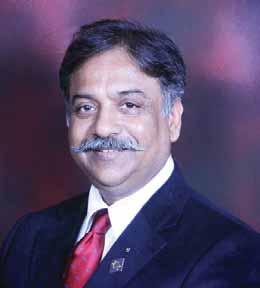
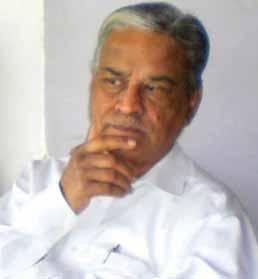
stress on inviting the right professionals after thorough verification and ensuring that they understand Rotary’s motto — Service Above Self.
Uday Kumar was a regular speaker at club meetings and the topic mostly was on Model Club, which was his passion. He was one of the staunch supporters of the Rotary Leadership Institute — educating Rotarians to become great leaders through training and collaboration. He motivated everyone to think big and Dr Srinagesh Simha, past president of Rotary Bangalore Indiranagar, recalls how Dr Kishore Rao, Gurmeet Randhawa and he worked passionately and conceptualised the club’s signature project — Karunashreya, a hospice in 1994.
All the three past governors were recipients of the Service Above Self Award.
May their souls rest in eternal peace!
(The writer is chairman - district Avoidable Blindness committee, RID 3190.)

































